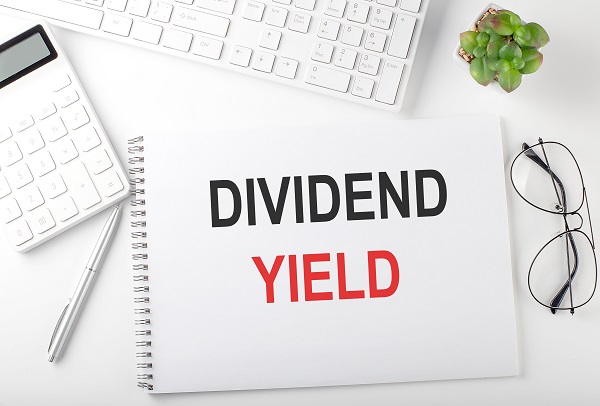Over the most recent one-year in the midst of unpredictability in equity advertises, the Nifty Dividend Opportunities 50 — complete return file (TRI) has outflanked the Nifty50. Likewise, profit yield reserves had 4,75,387 folios and the AUM (Assets Under Management) of Rs 4,416 crore in January 2020.
The folio count has expanded to 588,848 as of August 2022 and the AUM to Rs 10,123 crore, as per the information distributed by the Association of Mutual Funds in India (AMFI).
This development excursion can be connected with the essential idea of profit yield reserves. People park cash in these assets as they are by and large unaffected by financial exchange variances and is somewhat loaded with a high return on speculations.
Along these lines, before we dive into additional subtleties, how about we initially comprehend what it implies:
| Fund name | 1-year return | 3-year return | 5-year return |
| Aditya Birla Sun Life Dividend Yield Fund – Direct Plan – GrowthDividend Yield Fund | 5.82% | 21.02% | 8.92% |
| UTI Dividend Yield Fund – Direct Plan – GrowthDividend Yield Fund | -1.80% | 19.12% | 12.72% |
| IDBI Dividend Yield Fund – Direct Plan – GrowthDividend Yield Fund | 7.81% | 21.99% | – |
| Tata Dividend Yield Fund – Direct Plan – GrowthDividend Yield Fund | 5.49% | – | – |
| HDFC Dividend Yield Fund – Direct Plan – GrowthDividend Yield Fund | 13.43% | – | – |
| ICICI Prudential Dividend Yield Equity Fund – Direct Plan – GrowthDividend Yield Fund | 16.47% | 23.86% | 12.08% |
| Sundaram Dividend Yield Fund – Direct Plan – Growth Dividend Yield Fund | 2.79% | 21.34% | 12.93% |
| Templeton India Equity Income Fund – Direct – Growth Dividend Yield Fund | 12.06% | 24.96% | 14.54% |
Dividend yield funds are topical mutual funds where at least 65% of the AUM is put resources into high profit yielding stocks. These assets essentially put resources into value portions of organizations that proclaim profits consistently.
Any firm will deliver profit to investors just when they can create a gain. This implies that the basic loads of these assets are of organizations that have solid financials.
How the assets have performed recently?
The accompanying table shows the top-performing profit yield assets according to the most recent 1-year, 3-year and 5-year returns:
Would it be advisable for you to put resources into them?
Amit Nadekar, Senior Equity Fund Manager at LIC Mutual Fund Asset Management expressed that there are numerous purposes behind a financial backer to pick a profit yield store.
Nadekar says profits are a significant wellspring of abundance creation in value markets and observational proof recommends that over an extensive stretch of 10 years in addition to profits may ordinarily represent 30-40 percent of value returns while the balance 60-70 percent might be driven by capital appreciation.
Consequently, putting resources into profit yield subsidizes appears to be legit, Nadekar said.
Two of the most followed venture styles are development and worth contributing. Profit yield finances fall in the worth financial planning camp.
By and large, high profit yield stocks are organizations in a developed stage major areas of strength for with age and more slow development rates. Now and again, quality development establishments could likewise be accessible at appealing profit yields because of momentary difficulties of the business.
Given the better return and stable organizations, high profits yield stocks are less unstable and fall lesser in a down market.
Hence, profit yield assets can fabricate an arrangement of stocks with a steady plan of action and unsurprising incomes, which thus offer financial backers a valuable chance to partake in value markets with lesser unpredictability, Nadekar told CNBC-TV18.com.
Who ought to put resources into dividend yield funds?
As per Pankaj Shreshta — Head-Investment Advisory Division — Prabhudas Lilladher, profit yield assets can be considered by financial backers who need steadiness in their portfolio and favors low unpredictability in returns.
“This classification is great for new value financial backers and moderate value financial backers,” Shreshta told CNBC-TV18.com.
Notwithstanding, it’s critical to take note of that organizations deliver a higher profit center around paying out their benefits to investors as opposed to reinvesting in the business for development and extension.
Thus, this classification of assets won’t be appropriate for a financial backer who likes to put resources into development stocks, Shreshta said.
How they are burdened?
The profits presented by mutual funds are currently burdened in the possession of financial backers according to the annual expense piece they fall under. The pace of tax assessment from capital increases presented by these assets, be that as it may. relies upon the holding time frame and the sort of equity openness.
In case the equity openness is in excess of 65%, the standards of tax assessment from value reserves apply. If not, then, at that point, the standards of tax collection from debt funds apply, as indicated by Clear.

























